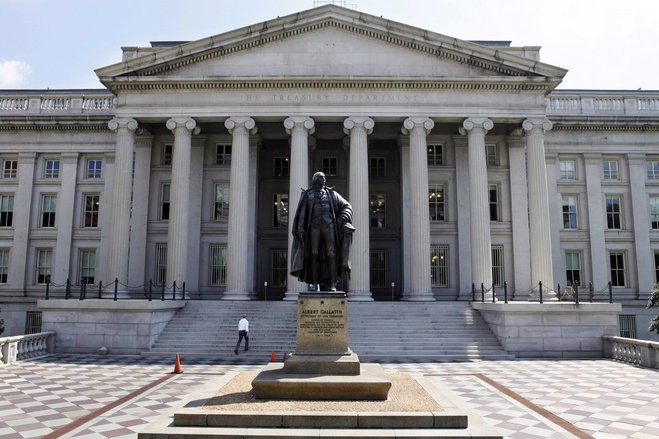Safe investments still risky
Post on: 19 Июнь, 2015 No Comment

Share This Story
Image: chanpipat/FreeDigitalPhotos.net
When the economy goes south and the markets get wonky, many people, especially those who are close to retirement, clamor for safe investment assets. But what qualifies as a safe investment and are there really any such things out there for people to invest in?
Gone are the days when you could plunk your entire savings into a timed certificate of deposit or a savings account and actually receive interest on your money. Now, no matter where you put your assets, there is going to be some risk attached. The question is which options are the least volatile but still allow you to make money on your money?
The first thing individuals must do is acknowledge that risk cant be avoided, says Tom McGuigan, a certified financial planner with Burns Advisory Group in Old Lyme, Conn. Any time you say you want to get rid of this risk or that risk you are deciding to accept a different one.
McGuigan recently hosted an event for his clients called, The Risky Side of No Risk, where he discussed various investment risks and how they can be managed.
One of the things that astonished his clients was how often safe investments failed to keep up with inflation. Forty percent of the time, safe things meant you could only buy a half a loaf of bread instead of a full loaf of bread after 10 to 15 years. I wouldnt consider that safe at all. I would say that is highly risky. It is actually losing money. By sitting in cash, CDs or short-term fixed annuities, they are actually losing their ability to purchase goods and services. Our whole focus is to make sure they maintain the ability to buy goods and services when they retire, McGuigan said.
One of his strategies is to help clients understand what volatility is and should we care too much about it. I believe Wall Street loves to play up the notion of volatility. They do that so they can create products with less volatility. Wall Street told [investors] to be afraid of [volatility]. They created the problem and now they have created investments that reduce volatility, he said. We put volatility in perspective.
He encourages clients to stick with the investments they agreed to in their financial plans. Every time he works with a client, they discuss the risks and market volatility so they wont be surprised when their investments dip down and then go back up.
Younger clients dont need to worry about volatility if they are not drawing from their portfolio. It is irrelevant. It is a completely different story when they are retired and drawing money out of it. You dont want a portfolio to drop 30 percent and then take money out of it, McGuigan said.
When he builds a clients portfolio, he determines how much money they want to have in retirement and how much they will receive from pensions and Social Security. He then has them set aside a certain number of years worth of that needed income into an emergency fund he calls the war chest.
The war chest is not invested in stocks. Instead, it is placed in bonds or short-term bonds. The rationale is that when you retire, if the stock market is doing fine, you can pull the income you need from those investments. When the market goes down, clients can draw money from the war chest and use it until the market recovers so they never need to touch their stock investments.
As far as less volatile investments go, McGuigan recommends short-term investment grade corporate bonds because corporations have done a terrific job of cleaning up their balance sheets. The government has done the opposite and gotten worse, he said. Interest rates will go up again, he said, so investing in short-term bonds, meaning from one to two years, will keep your bonds protected a little bit. Thats not safe, but less volatile than other things.
T. Doug Dale Jr. a client advisor with Security Ballew Wealth Management in Jackson, Miss. believes that long-term treasury bonds are still a fairly safe investment.
For older clients, who are closer to retirement, Dales prefers asset classes that can generate safe interest, safe returns that are as non-correlated to each other as possible.
He encourages his clients to consider owning a diversified portfolio of traditional stocks and bonds but to put between 10 and 20 percent into long-term treasury bonds.
I see such a fear level that is unwarranted and unjustified from advisors being willing to use long-term treasuries in portfolios, Dale said. They are worried that interest rates will go up, bringing bond yields down. He said he believes those fears are unwarranted, at least in the current environment. I say that because in a heavily over indebted environment, the only way to get our way out is to keep the cost of money out of it, to grow our way out of it, he said.
He added that 30-year long bond yields are not much higher than they were at the height of the 2008 financial crisis.
If a portfolio is properly structured with long-term treasuries, it can produce a relatively stable yield of 3 to 5 percent or more, he said. More stable than it would be without them.
Most advisors have a good diverse mix of corporate bonds, emerging market bonds and fixed income pieces that are essential to have in a conservative portfolio for someone close to retirement, he said, but the ingredient that is likely missing is the 30-year bond piece. Dont put it all in 30-year treasuries, but they are a good addition to whatever equity exposure a client and advisor is comfortable with, Dale said.














